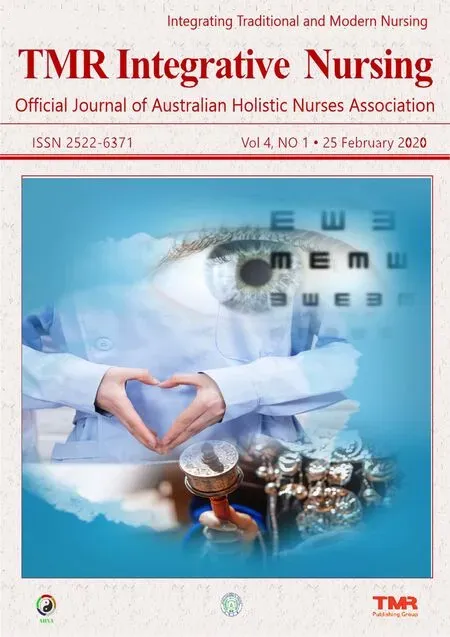Early diagnosis and management of Congenital diaphragmatic hernia
Aisha Alshdefat,Hilal Al-Mandhari,Judie Arulappan
1Lecturer,Department of Maternal and Child health,College of Nursing,Sultan Qaboos University,Sultanate of Oman; 2Consultant Neonatologist, Department of Neonatology, Sultan Qaboos University Hospital, Sultanate of Oman; 3Assistant Professor/ HOD,Department of Maternal and Child health,College of Nursing,Sultan Qaboos University,Al khoudh,Muscat,Sultanate of Oman.
Abstract
Keywords:Congenital diaphragmatic hernia,Shifted mediastinum,Case report
Introduction
Congenital Diaphragmatic Hernia(CDH)a birth defect that occurs in the diaphragm.The muscle that separates the chest from the abdomen fails to close during the prenatal development.This allows the contents from the abdomen to migrate into the chest cavity through the hole.When the abdominal organs are in the chest cavity, the space for the lungs to grow is very limited.This in turn hinders the lung function.CDH is a life threatening problem in infants.The mortality rate is very high due to its complications[1].
The incidence of CDH ranges from 0.8-5 per every 10,000 births.This incidence varies across the population [2-5].CDH is predominantly seen in males[6].The newborns with CDH often have severe respiratory distress.This respiratory distress can be life threatening unless treated appropriately [7].Usually,the condition can be diagnosed prenatally by ultrasound in more than 50%of cases at the gestational age of 24 weeks.
Though many advances have been made in the diagnosis and management of CDH, the mortality and morbidity are still high.The infants with CDH requires a prolonged length of stay in the hospital and require multi-disciplinary and collaborative approach for their management [8-10].If the child has isolated CDH, the prognosis is usually better than CDH complicated with multiple anomalies[11].
This case summarizes the case of CDH which was identified during the fetal life and managed appropriately in the neonatal period.
Case presentation
A 36-year-old pregnant woman, G5P4 at 38 weeks of gestation delivered a female baby with left congenital diaphragmatic hernia having an APGAR 8 and birth weight 2.930 kg.At 32 weeks of pregnancy, the fetus was diagnosed to have CDH (Figure1).The mother was referred from a regional health center to the advanced tertiary level Sultan Qaboos University hospital.During the fetal assessment, it showed that the heart was shifted to the right side, stomach and bowel were seen at the same level of the heart.A full term female baby, with no obvious dysmorphic features was delivered vaginally.Initial blood gas was pH 7.15, PCO2: 72.9 which was high, HCO3: 19.6 which was low,and Glucose:1.8 which is low.At birth the baby cried and the baby was immediately intubated.The APGAR score was 8 and 9 at 1 and 5 minutes respectively.The baby didn't pass meconium but the anus was patent.Chest X- ray showed left sided hemi thorax with cystic lesion suggestive of Bowel loop and shifted mediastinum to right side.The child had Patent Ductus Arteriosus.Nasogastric tube (NGT) was inserted and connected to continuous suction for decompression of the stomach.Vitamin K 1mg injection was administered intramuscularly.
Baby was shifted to Neonate Intensive Unit,intubated and ventilated via T-piece, NGT in situ, and connected to cardiorespiratory monitor.Endotracheal tube was connected to mechanical ventilator.Vital signs upon admission were: Heart rate 180 BPM,Respiratory rate 69/min, Saturation 99%, Blood pressure 77/42, Axillary Temperature 36.6 C.Initial blood gas analysis showed the evidence of mixed acidosis(pH:7.15,PCO2:72.9,HCO3:19.6).
The initial Chest X-ray (Figure1) showed bowel loop, shifted mediastinum to right side and Endotracheal Tube Tip below the clavicles at T2 vertebral level.Echocardiography showed normal cardiac structure and function apart from small 3 mm Patent ductus arteriosus, normal left aortic arch with no coarctation and good size ventricles with normal systolic function.The child was kept Nil per oral and continued with Total parenteral nutrition.
On the third day of life, the infant underwent surgical repair.Exploratory laparotomy through left subcostal incision for congenital diaphragmatic hernia repair was performed.Abdominal organs including stomach, pancreases, small bowel, large bowel, and spleen were successfully restored from the thoracic cavity and the diaphragmatic defect was closed.Postoperatively chest X-ray (Figure2) showed partial expansion of left lung.
The Infant was extubated on day five of life to continuous positive airway pressure (CPAP).Subsequently,the child was weaned to high flow nasal cannula O2by day ten of life, and finally to room air by day 13 of life.Enteral feeding was started on day 5 of life and gradually progressed to full oral feeding by day 13 of life.
The general condition improved, and on the 15th day of hospitalization, infant was discharged home in good general condition
Discussion
Congenital diaphragmatic hernia is a rare condition.It is structural defect which is characterized by shifting of abdominal organs to the pleural cavity which in turn results in compression and shift of the mediastinum to the opposite side.The pulmonary hypoplasia may lead to development of significant persistent pulmonary hypertension.12 Up to 80% to 95% of cases are diagnosed by antenatal ultrasound with many of the remaining cases diagnosed within the first 24 hours of life[13,14].
This case was diagnosed at 32 weeks of pregnancy and appropriately managed on the third day of neonatal period.The child had uneventful post-operative recovery.In this case fortunately, there was no other associated anomalies, which of course reflect in future likelihood of good prognosis.Antenatal detection in this case, lead to coordinated antenatal referral to a tertiary level, surgical center.Since the birth occurred in an advance center that is well equipped to provide necessary intervention, and surgery on time, the neonatal complications were minimized and the chances of survival was optimized.The determinants for the good prognosis is facilitated.
Conclusion
We presented this case to highlight the importance of timely detection of such congenital abnormalities that can be diagnosed during the antenatal period by ultrasonography leading to coordinated transfer for delivery at a specialized center where definitive surgical intervention could be done and a good prognosis can be expected.
- Nursing Communications的其它文章
- Research progress of Kinesiophbia in patients with temporomandibular disorders
- Cross-cultural nursing's systematic model and its application in minority patients in China
- Effect of auricular acupoint sticking and pressing on postoperative pain of patients with mixed hemorrhoids:A Meta-analysis
- Analysis of the present situation and influencing factors of self-perceived burden in primary glaucoma patients

